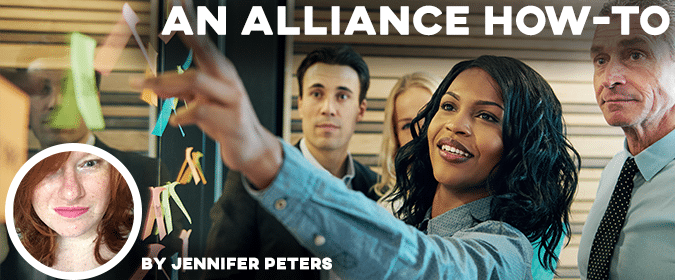
After our first How-To article appeared, we got queries from members about a follow-up. “Sponsored content sounds like a terrific way to add to advertising revenue,” they said, “but how do we price it?” To answer this question, I went to the ultimate source: BuzzFeed.
While native might not be your biggest product right now, or even a part of your advertising plan, there’s still a lot you can learn from how BuzzFeed does business.
BuzzFeed produces some of the most viral native advertising, and their sponsored content is seamlessly integrated with their editorial content. That’s in part because native advertising was the first product BuzzFeed offered to advertisers, so it’s been a part of their content mix since day one.
“Native ads are our bread and butter,” says Inés Pacheco, BuzzFeed’s director of business operations.
Pacheco notes that when native advertising first came along, many publishers were throwing it in as a freebie when advertisers purchased a bigger display package. While in some cases, Pacheco says, that can devalue your native ads, it’s a fantastic way to slowly add the option into your product mix.
You can also treat native ads like display ads, at least in terms of pricing, at the beginning. “It’s a great way to start to collect data on your views (per piece of native content) and your audience,” she says. “What a view looks like for you will be different from what a view looks like for BuzzFeed. Your view might be more expensive depending on your audience.”
As an initial offering, Pacheco suggests giving advertisers two native posts (an entry-level package at BuzzFeed), because that will allow you to find an audience across content and platforms. This is something that will not only benefit advertisers, but will give you more data on how your audience interacts with native content, so that you can start figuring out how to price native-only ad offerings down the line.
If you don’t want to give away ad space for free, Pacheco says you can price native ads the same way you would price display ads to get things off the ground. And for that, there are numerous pricing options. You can go with a cost-per-view (CPV) or a cost-per-day (CPD) model, or you can use a cost-per-thousand (CPM) impressions model.
“When we first moved to a cost-per-view model, we looked at a year’s worth of [CPM data] to see how these programs had performed in the past,” Pacheco explains.
You don’t need to rush into changing your pricing model, and it may be more worthwhile to build up your available data instead of going straight for increased revenue. Even after all these years, BuzzFeed is constantly refining their pricing — and content — based on actual performance. You don’t need to have the perfect plan in place overnight.
Once your team is more comfortable with native content and you’ve collected the data you need to prove your reach, you might find yourself increasing your CPV, CPD or CPM prices. You’ll also want to set a base price per package to make sure you’re offsetting the costs of actually creating the native content in-house. How you price that can be flexible depending on the content and the advertiser.
For example, you may want to offer a lower base price and a higher CPD, or vice versa. You’ll want to find what works not only for you, but for your advertisers. You also need to take into account the value of your social channels when considering what price you set, Pacheco says. Native isn’t a one-size-fits-all advertising option, so it’s up to both sides of the arrangement to be willing to bend a bit to ensure the best fit.
The creative side is also something that you’ll need to evolve over time as you get more settled into offering native ads. There’s always a push-pull with advertisers, Pacheco says, and it will be up to your creative team to find the right balance of branding and content so that the ads attract readers and viewers and keep them hooked. That information, too, will require you to collect data from early native partnerships.
A large-scale native operation like BuzzFeed is able to offer cross-platform content and packages that include a mix of native pieces, from social videos to quizzes to sponsored articles, and they’re able to promote it across their own social media channels, each of which has millions of followers. But just because you don’t have the same reach doesn’t mean you can’t provide your advertisers an equally worthwhile native advertising package. The data you gather from early experiments with the medium will help you not only attract new advertisers, but also will guide you as to what pricing model and content mixture works best for your audience.
Are you offering branded content to your advertisers? Are you considering adding it to the mix? We want to hear about it! You can tell us what you’re doing with native advertising by emailing jennifer@newsmediaalliance.org or tweeting @EditrixJen. We’d also love to know what else you’d like to learn in 2018, whether you’re on the business or creative side of the news media business.
